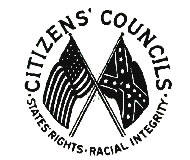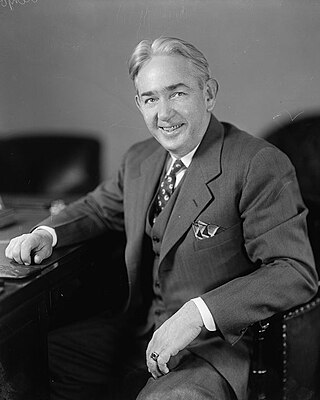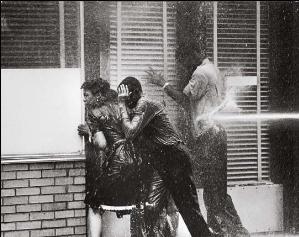
The civil rights movement was a nonviolent social movement and campaign from 1954 to 1968 in the United States to abolish legalized racial segregation, discrimination, and disenfranchisement in the country. The movement had its origins in the Reconstruction era during the late 19th century and had its modern roots in the 1940s, although the movement made its largest legislative gains in the 1960s after years of direct actions and grassroots protests. The social movement's major nonviolent resistance and civil disobedience campaigns eventually secured new protections in federal law for the civil rights of all Americans.
Brown v. Board of Education of Topeka, 347 U.S. 483 (1954), was a landmark decision by the U.S. Supreme Court which ruled that U.S. state laws establishing racial segregation in public schools are unconstitutional, even if the segregated schools are otherwise equal in quality. The decision partially overruled the Court's 1896 decision Plessy v. Ferguson, which had held that racial segregation laws did not violate the U.S. Constitution as long as the facilities for each race were equal in quality, a doctrine that had come to be known as "separate but equal". The Court's unanimous decision in Brown paved the way for integration and was a major victory of the civil rights movement, and a model for many future impact litigation cases.

The Citizens' Councils were an associated network of white supremacist, segregationist organizations in the United States, concentrated in the South and created as part of a white backlash against the US Supreme Court's landmark Brown v. Board of Education ruling. The first was formed on July 11, 1954. The name was changed to the Citizens' Councils of America in 1956. With about 60,000 members across the Southern United States, the groups were founded primarily to oppose racial integration of public schools: the logical conclusion of the Brown v. Board of Education ruling.

Thomas Bahnson Stanley was an American politician, furniture manufacturer and Holstein cattle breeder. A Democrat and member of the Byrd Organization, Stanley served in a number of different political offices in Virginia, including as the 47th speaker of the Virginia House of Delegates and as the Commonwealth's 57th governor. He became known for his support of the Massive Resistance strategy to prevent school desegregation mandated by the United States Supreme Court's decisions in Brown v. Board of Education, and Virginia's attempt to circumvent those decisions was known as the Stanley Plan.

Racial integration, or simply integration, includes desegregation, leveling barriers to association, creating equal opportunity regardless of race, and the development of a culture that draws on diverse traditions, rather than merely bringing a racial minority into the majority culture. Desegregation is largely a legal matter, integration largely a social one.

James Lindsay Almond Jr. was an American lawyer, state and federal judge and Democratic party politician. His political offices included as a member of the U.S. House of Representatives from Virginia's 6th congressional district (1946-1948), 26th Attorney General of Virginia (1948-1957) and the 58th Governor of Virginia (1958-1962). As a member of the Byrd Organization, Almond initially supported massive resistance to the integration of public schools following the United States Supreme Court decisions in Brown v. Board of Education, but when Virginia and federal courts ruled segregation unconstitutional, Almond worked with the legislature to end massive resistance.
Massive resistance was a strategy declared by U.S. senator Harry F. Byrd Sr. of Virginia and his son Harry Jr.'s brother-in-law, James M. Thomson, who represented Alexandria in the Virginia General Assembly, to get the state's white politicians to pass laws and policies to prevent public school desegregation, particularly after Brown v. Board of Education.

The Byrd machine, or Byrd organization, was a political machine of the Democratic Party led by former Governor and U.S. Senator Harry F. Byrd (1887–1966) that dominated Virginia politics for much of the 20th century. From the 1890s until the late 1960s, the Byrd organization effectively controlled the politics of the state through a network of courthouse cliques of local constitutional officers in most of the state's counties.

Oliver White Hill, Sr. was an American civil rights attorney from Richmond, Virginia. His work against racial discrimination helped end the doctrine of "separate but equal." He also helped win landmark legal decisions involving equality in pay for black teachers, access to school buses, voting rights, jury selection, and employment protection. He retired in 1998 after practicing law for almost 60 years. Among his numerous awards was the Presidential Medal of Freedom, which U.S. President Bill Clinton awarded him in 1999.

Segregation academies are private schools in the Southern United States that were founded in the mid-20th century by white parents to avoid having their children attend desegregated public schools. They were founded between 1954, when the U.S. Supreme Court ruled that segregated public schools were unconstitutional, and 1976, when the court ruled similarly about private schools.

WSLS-TV is a television station licensed to Roanoke, Virginia, United States, serving the Roanoke–Lynchburg market as an affiliate of NBC. Owned by Graham Media Group, the station maintains studios on Fifth Street in Roanoke, and its transmitter is located on Poor Mountain in Roanoke County. It is the third-oldest continuously operating station in Virginia, behind Richmond's WTVR-TV and Norfolk's WTKR, as well as the state's oldest station west of Richmond.

James Jackson Kilpatrick was an American newspaper journalist, columnist, author, writer and grammarian. During the 1950s and early 1960s he was editor of The Richmond News Leader in Richmond, Virginia and encouraged the Massive Resistance strategy to oppose the U.S. Supreme Court's decisions in the Brown v. Board of Education ruling which outlawed racial segregation in public schools. For three decades beginning in the mid-1960s, Kilpatrick wrote a nationally syndicated column "A Conservative View", and sparred for years with liberals Nicholas von Hoffman and later Shana Alexander on the television news program 60 Minutes.

The Birmingham campaign, also known as the Birmingham movement or Birmingham confrontation, was an American movement organized in early 1963 by the Southern Christian Leadership Conference (SCLC) to bring attention to the integration efforts of African Americans in Birmingham, Alabama.
The Jim Crow laws were state and local laws introduced in the Southern United States in the late 19th and early 20th centuries that enforced racial segregation, "Jim Crow" being a pejorative term for an African American. Such laws remained in force until 1965. Formal and informal segregation policies were present in other areas of the United States as well, even if several states outside the South had banned discrimination in public accommodations and voting. Southern laws were enacted by white "Redeemers"-dominated state legislatures to disenfranchise and remove political and economic gains made by African Americans during the Reconstruction era. Such continuing racial segregation was also supported by the successful Lily-White Movement of Southern Republicans.

The Virginia Civil Rights Memorial is a monument in Richmond, Virginia, commemorating protests which helped bring about school desegregation in the state. The memorial was opened in July 2008, and is located on the grounds of the Virginia State Capitol. It features eighteen statues of leaders or participants in the Civil Rights Movement on four sides of a rectangular granite stone block onto which are carved quotes. The memorial was designed by Stanley Bleifeld, who was chosen by the commission behind the construction of the monument. The memorial cost $2.8 million which was financed by private donations.
The Stanley Plan was a package of 13 statutes adopted in September 1956 by the U.S. state of Virginia. The statutes were designed to ensure racial segregation would continue in that state's public schools despite the unanimous ruling of the U.S. Supreme Court in Brown v. Board of Education (1954) that school segregation was unconstitutional. The legislative program was named for Governor Thomas B. Stanley, a Democrat, who proposed the program and successfully pushed for its enactment. The Stanley plan was a critical element in the policy of "massive resistance" to the Brown ruling advocated by U.S. Senator Harry F. Byrd Sr. The plan also included measures designed to curb the Virginia state chapter of the National Association for the Advancement of Colored People (NAACP), which many Virginia segregationists believed was responsible for "stirring up" litigation to integrate the public schools.

In the United States, school integration is the process of ending race-based segregation within American public and private schools. Racial segregation in schools existed throughout most of American history and remains an issue in contemporary education. During the Civil Rights Movement school integration became a priority, but since then de facto segregation has again become prevalent.
This is a timeline of the civil rights movement in the United States, a nonviolent mid-20th century freedom movement to gain legal equality and the enforcement of constitutional rights for people of color. The goals of the movement included securing equal protection under the law, ending legally institutionalized racial discrimination, and gaining equal access to public facilities, education reform, fair housing, and the ability to vote.
Earl Abbath Fitzpatrick was a Virginia lawyer and member of the Virginia General Assembly representing Roanoke between 1940 and 1959, first as a delegate and then as a state Senator. A lieutenant in the Byrd Organization, Fitzpatrick was active in the Massive Resistance to racial integration vowed by U.S. Senator Harry F. Byrd after the U.S. Supreme Court decisions in Brown v. Board of Education. He introduced much of the segregationist legislation and was vice-chairman of the Boatwright Committee which investigated the NAACP for litigating on behalf of civil rights, before being defeated in the 1959 Democratic primary.
The Commission on Education, known as the Perrow Commission after its chairman, Virginia state senator Mosby Perrow Jr., was a 40-member commission established by Governor of Virginia J. Lindsay Almond on February 5, 1959 after the Virginia Supreme Court in Harrison v. Day and a three-judge federal court in James v. Almond had both struck down significant portions of the Stanley Plan, which had implemented Massive Resistance to the U.S. Supreme Court decisions in Brown v. Board of Education issued on May 17, 1954 and May 31, 1955. Four legislators were appointed from each of the ten U.S. Congressional districts in Virginia. Compared to the Gray Commission that Governor Thomas B. Stanley had appointed five years previously, Perrow Commission included more representatives from cities, northern and Western Virginia, although many members served on both commissions.












